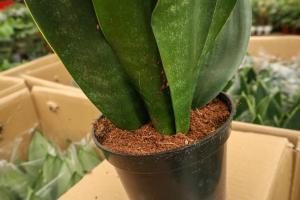How to plant tomatoes in hydroponics
Hydroponics is an innovative way of growing plants without soil. It requires the use of nutrient-rich water to supply the plants with the necessary elements for growth. Growing tomatoes in hydroponics is an excellent way of reaping bountiful yields despite limited space or poor quality soil. Here's a comprehensive guide on how to plant tomatoes in hydroponics.
Step 1: Choose the Right Growing Medium
Tomatoes need a stable base to anchor their roots and absorb nutrients. Therefore, it is essential to choose the best growing medium that will provide your plants with necessary support. Some of the commonly used growing media in hydroponics include coconut coir, Rockwool, perlite, and vermiculite. You can also choose to use clay pellets, sand, or gravel as a growing medium. Ensure the growing medium is pH balanced and provides adequate drainage to avoid waterlogging.
Step 2: Set up a Hydroponic System
There are several hydroponic systems available in the market, but the most common one is a nutrient film technique (NFT). An NFT system works by flowing nutrient-rich water through a narrow channel that supports the growing plants. Ensure the hydroponic system is set up in a stable location with adequate access to water and electricity.
Step 3: Select the Best Tomato Variety
Different varieties of tomatoes perform well under different environmental conditions. Therefore, it is essential to select a variety that will thrive under your hydroponic system's conditions. Some of the excellent tomato varieties to grow in hydroponics include cherry tomatoes, beefsteak tomatoes, and Roma tomatoes. Select a variety with high yields, disease resistance, and excellent fruit quality.
Step 4: Provide Sufficient Light
Tomatoes need a lot of light to grow and develop fruits. Ensure the hydroponic system is set up in a sunny location or provide adequate artificial lighting. Tomatoes need an average of 8-12 hours of light per day. You can use LED grow lights, fluorescent lights, or high-intensity discharge (HID) lights in your hydroponic system.
Step 5: Monitor Nutrient Levels
Hydroponics requires a careful balance of nutrients and pH levels to ensure plant growth and productivity. Nutrient solutions are available in pre-mixed solutions or as individual components that can be mixed per the manufacturer's instructions. The pH of the nutrient solution should be between 5.5-6.5 for optimal nutrient uptake. Monitor nutrient levels using an electrical conductivity meter or a TDS meter and adjust the nutrient solution accordingly.
Step 6: Prune and Train Your Tomatoes
Tomatoes require regular pruning and training for maximum growth and fruit development. Remove suckers and side branches to focus the plant's growing energy into the main stem and fruits. You can train your tomatoes to grow vertically using trellises, cages, or stakes. Supporting the plants helps to maintain a compact plant structure and reduce damage from pests and diseases.
Step 7: Harvest and Enjoy Your Tomatoes
Tomatoes are ready to harvest when they are fully ripe but still firm. Use a sharp knife or shears to cut the fruits from the stem, leaving a small piece of the stem attached. After harvesting, store the tomatoes in a cool, dry area to ensure they remain fresh. Enjoy your bounty of fresh, juicy tomatoes in salads, sandwiches, and sauces.
In conclusion, growing tomatoes in hydroponics is an excellent way of maximizing yields in limited spaces and challenging environmental conditions. Follow these steps, and you'll be well on your way to producing delicious, juicy tomatoes year-round. Happy hydroponic gardening!

 how many times do yo...
how many times do yo... how many planted tre...
how many planted tre... how many pine trees ...
how many pine trees ... how many pecan trees...
how many pecan trees... how many plants comp...
how many plants comp... how many plants can ...
how many plants can ... how many plants and ...
how many plants and ... how many pepper plan...
how many pepper plan...
































